
Electric Vehicles: What’s the Deal?
By Randy Lioz, Editor, Car-ED.com | March 2018
The current moment seems to be quite the debutant ball for electric vehicles. Auto manufacturers have all, in turn, announced major commitments to electrifying their fleets, as a growing number of countries—largely in Europe, but including China and India—publicize plans to phase out internal combustion engines.
But the picture is complicated by the demand side, where there seem to remain significant barriers to mass EV adoption. Here we’ll take a look at these developments and tease out some insights about what the future of the EV market might look like.
Who’s banning traditional engines?
Several countries have come out with policy stances that essentially aim to put internal combustion engines (ICEs) in the rear-view mirror. Norway is the most aggressive here, banning them by 2025, while India and the Netherlands peg the date at 2030 (this has also been proposed in Germany). Britain and France are more relaxed, with a target of 2040.
China has yet to plant its own stake in the ground for a total ban, but the largest car market in the world has made regulatory moves that require its sales to comprise 10% EVs by next year and 12% by the following year. These are big jumps, considering the EV penetration in China in 2017 probably didn’t break 2%.
Country |
Internal Combustion Ban Starts |
| Norway | 2025 |
| India | 2030 |
| Ireland | 2030 |
| Netherlands | 2030 |
| Germany* | 2030 |
| China* ** | TBD, EV production mandated |
| Britain | 2040 |
| France | 2040 |
| California* | 2040 |
*Proposed
**Production rather than sales ban
The United States, now the only nation in the world that has signaled its intent to leave the Paris Climate Agreement, is clearly in the midst of a different regulatory mindset. But while the federal government is not setting any ambitious plans to match other parts of the world, the more progressive states have announced their intent to fill that role, with California leading the pack. The Golden State is still in discussions as to when to cut off ICE sales—a proposal was put forth already for 2040—but the state has set a goal of moving towards getting 50% of its energy supply from renewable sources by 2030, and the push toward EVs will be a major part of that plan.
What’s the industry’s response?
With all of these developments around the world, the auto industry is trying to ensure they’re not caught flat-footed by these regulatory pressures. Within the last year, nearly every automaker has released big plans to electrify its fleet over the next several years.
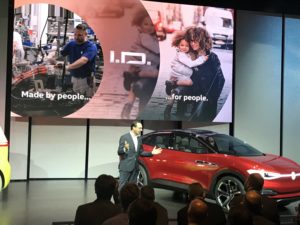
VW discusses its plans for electrification at an event featuring its I.D. lineup of EV concepts
Volkswagen was one of the first to make a major announcement, since it had been stung by its diesel emissions scandal. It’s now become one of the most aggressive in this regard, announcing under its “Roadmap E” a fusillade of 80 new EV models by 2025—at which point they could comprise nearly one quarter of its sales—on the way to electrifying its entire lineup of 300 vehicles across all its brands by the year 2030. This means there will be at least a hybrid version available of every model, from the lowly Skoda Citigo to the replacement for the multi-million-dollar Bugatti Chiron.
The Americans are being aggressive as well, with GM promising 20 pure EVs within the next five years, but also planning the development of hydrogen-powered cars like Honda, Toyota and Hyundai are rolling out. And by 2022, Ford has said it will have 40 electrified models, including 16 pure battery EVs, as part of a plan to pump $11 billion into electrification.
Nearly every other automaker has made a pledge as to its electric vehicle plans, with even Fiat Chrysler, whose leader had until recently had been publicly ridiculing the practicality and potential of EVs, more recently publicizing its plans for electrifying its brand lineups.
Will it work?
Currently, though, there are serious obstacles to the wide-scale acceptance of electric vehicles. Largely due to the impression that there are not enough EV charging stations available, and the frustration at the speed of recharging from those that are, plug-in vehicle sales have grown frustratingly slow, especially in the U.S. where they still accounting for less than 1.5% of new vehicles purchased. They’re also on the expensive side, with the available tax incentives—up to $7,500 on the federal side combined with various state spiffs—still struggling to make EVs truly competitive on cost.
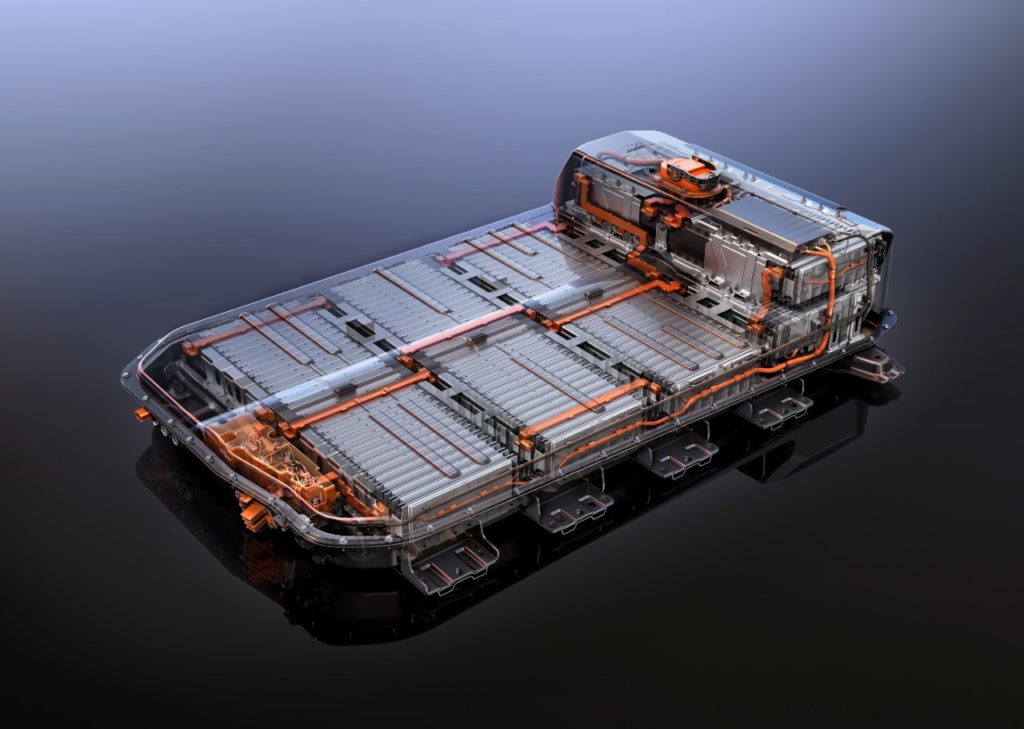
Battery pack from Chevy Bolt; GM was able to bring down the cost per kWh dramatically; image credit: GM
We’re likely on the cusp of some significant technological developments that can help to transcend these obstacles, though. The cost of batteries, which comprise up to one quarter of the cost of an EV, continues to come down. The industry consensus seems to be that we need to get to a level of $100/kWh for the packs that go into these cars, a marker that was repeated at the LA Auto Show by Mark McNabb, CEO of Electrify America, which is funded by VW in its goal of rolling out EV infrastructure.
With the cost curve shooting downward more aggressively than expected—this cost was $1,000 in 2010, but was at $209 at the end of 2017 according to Bloomberg New Energy Finance—this milestone might be achieved before 2025.
What might push this along more quickly is the development of solid state batteries, which replace the liquid electrolytes, and can improve cost, safety and energy density. These batteries are expected within a similar timeframe.
If these two developments pan out, it means a significant improvement in two of the major obstacles to EV adoption, with quicker charge times and cheaper vehicles.
What about the charging network?
This might be a more complex issue, because it deals with lifestyles and perceptions. Researchers assert that many more people could live with EVs than actually think they can. Nearly two years ago, MIT and the Santa Fe Institute published some research that stated that “87 percent of vehicles on the road could be replaced by a low cost electric vehicle available today, even if there’s no possibility to recharge during the day.”
And the charging network continues to grow, even if it’s not nearly as conspicuous as the network of gas stations in this country, many of which sport giant signs that can be seen from the highway. Many areas have a fairly high concentration of chargers, though with small signs that often blend in with the other parking signs on the street, they’re easy to miss.
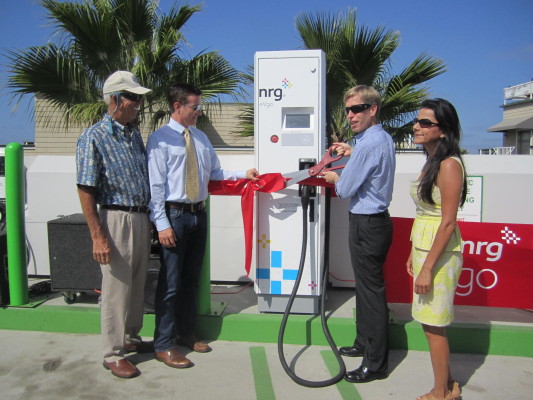
EVgo opens new charging station in California; photo credit: EVgo
For this reason, EVs are not at the forefront of most people’s minds as a realistic option. But there are good resources available to get a better picture of the charging network in your area. There are major commercial networks of chargers, like ChargePoint and EVgo, which have been building out nationally, and some states, like California, Georgia and Kentucky, are allowing electric utilities to roll out their own networks, many of which are focusing on apartment complexes, where residents often don’t have a garage in which to charge their vehicles overnight.
A California startup is bringing some creativity to that problem by harnessing the sharing economy. EVmatch considers itself the Airbnb of EV charging stations, allowing private owners of those chargers to make them available through an app for others to use for a fee.
To get a holistic view of the charging options in your area, PlugShare allows you to search by location and filter by connector type, access, and the over a dozen different charging networks out there.
So how can I live the EV lifestyle?
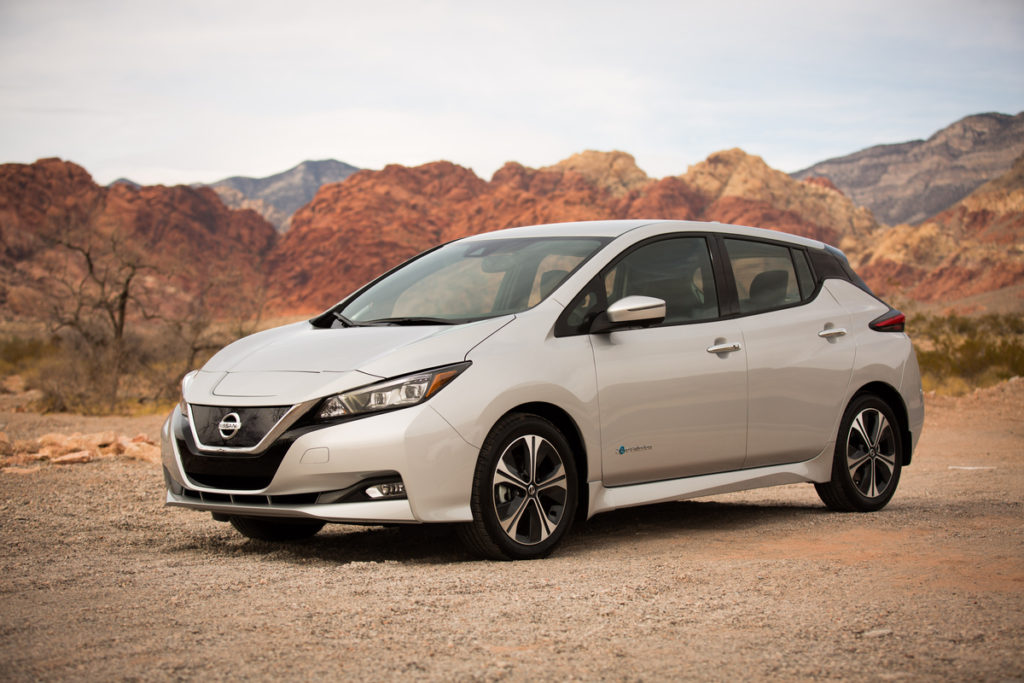
2018 Nissan LEAF; photo credit: Nissan
You no doubt know the names of several electric vehicles already on offer. Nissan and Chevrolet fired the opening salvos from mainstream carmakers, trying to convince Americans to plug in with the Leaf pure EV and the Volt plug-in hybrid, both incidentally launching in December of 2010. Since that time both vehicles have been reworked for their second generations, with the 2016 Volt getting a bump of over 50% for its electric-only range compared to the 2011 model (53 mi. vs. 35) and the 2018 Leaf more than doubling the 2011 model’s range (151 mi. vs. 73).
Of course, since the launch of the Volt, Chevy has gone all in and created a fully electric car, called the Bolt, which is the first car to combine a reasonable price (it can be gotten for under $30,000 if you factor in the federal tax credit) and a pretty long range (it’s rated at 238 mi. on a charge).
Of course, there is another car that purports to offer a similar value proposition, but it’s currently not available at the base price, if “available” is even a word that should be used in this situation. We’re referring, of course, to the Model 3 from Tesla, and for the sake of full disclosure your author currently has one of his Gs standing in line for that car. Yes, Tesla requires an interest-free loan of $1,000 from you to get in line. And it’s a testament to the allure of the brand that we haven’t instead bought a Chevy Bolt, which is an outstanding car. And which is available now.
It’s certainly relevant to mention the accomplishments of the Tesla brand. Not only is it the best selling EV brand in the world, but its brand is essentially one of the strongest in the industry, rated highly on categories including styling, performance, safety, and of course technology. The company is still having difficulty raising the production numbers on the 3, but it has an office brimming with very focused people sitting right next to its factory. We wouldn’t count them out.
At this point there are several options to choose from on the market, and the mainstream brands are starting to shift away from the “compliance cars” that offered a converted EV version of a mainstream car, toward dedicated models. These earlier offerings are by no means bad cars. The Kia Soul EV reflects the inherent goodness of the Soul from whence it came (for 2018 its range goes to 111 mi. from the ‘17’s 93), while the Fiat 500e just flat out improves upon the base 500. And the Volkswagen e-Golf is a fantastic choice, since not only does it now have 125 miles of range—vs. the original model’s 83—but it’s also a Golf, which by itself is a great thing. Ford also offers the Focus Electric, and smart has shifted its entire lineup to EVs, with the fortwo offered in both coupe and cabrio form.
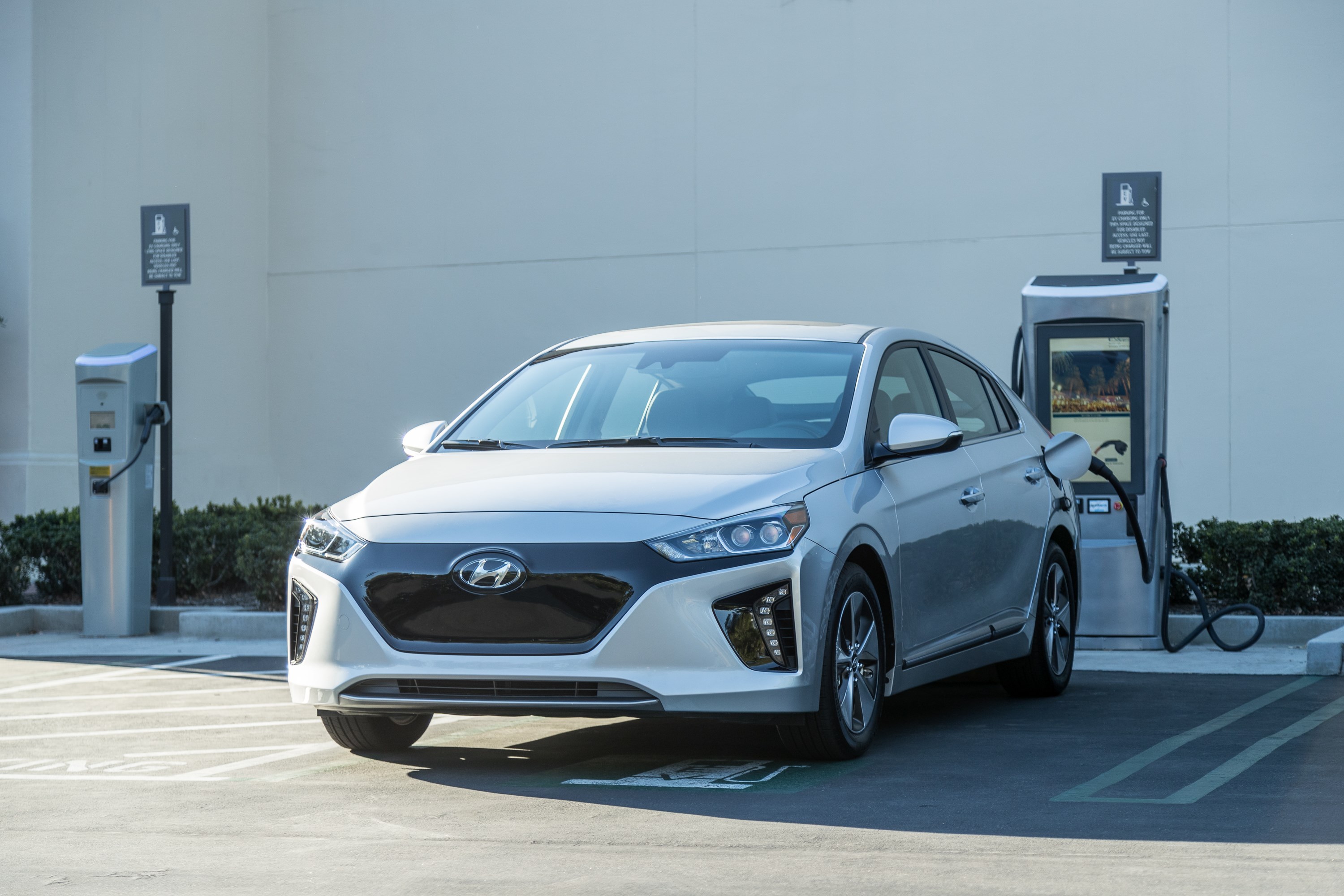
2017 Ioniq Electric Vehicle; photo credit: Hyundai
The Honda Fit EV also bears a nice reflection of the great car on which it’s based, though the only way to get one from Honda now is to lease a 2014 model. In fact several of these cars have gone away, including the Fit EV, the Chevy Spark EV, the Toyota RAV4 EV and the Mitsubishi i-MiEV, while more dedicated EV models have found their way to the market, like the Hyundai Ioniq (though it does come in standard hybrid version, along with the plug-in and pure EV). Honda has come strong to the marketplace with its Clarity lineup, which has added a plug-in and pure EV to its initial hydrogen fuel cell model. And there are a host of plug-in hybrids available from a wide variety of brands.
What about the future?
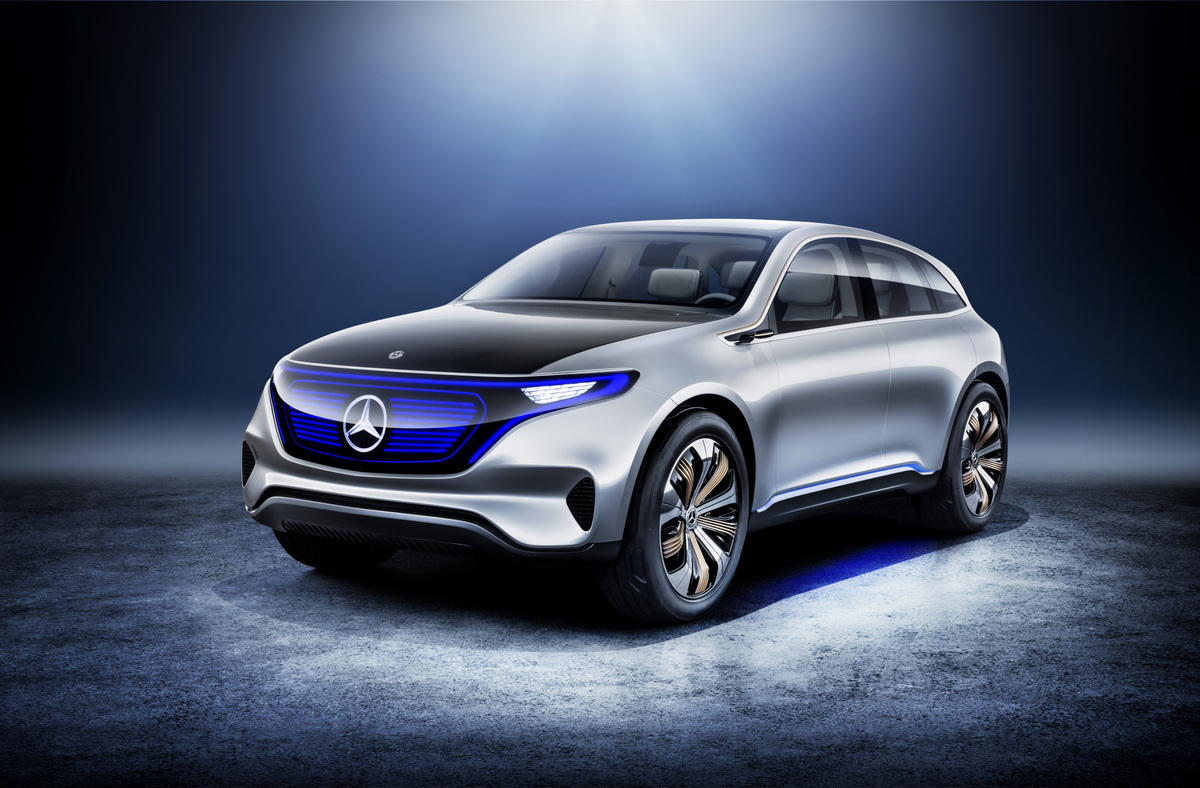
Mercedes-Benz Generation EQ Concept; photo credit: Mercedes-Benz
During the past year’s auto show season there has been a ton of focus on the future of EV lineups, with a variety of strategies emerging. Germany’s luxury juggernauts have both charted out EV roadmaps with dedicated electric vehicles, like the Mercedes Generation EQ concept and the BMW iNEXT. Mercedes claims EQ stands for Electric Intelligence—in the same way that in other contexts it improbably stands for “Emotional Intelligence”—and the vehicle emphasizes not only electrification, but also connectivity, autonomous capability and vehicle sharing. The concept, a smallish crossover, sets the pattern for the first vehicle (the 2020 EQC) from its EQ electric sub-brand, and other vehicles will follow built upon this vehicle architecture.
Similarly, BMW’s iNEXT concept previews a production vehicle, a 2021 model that will also be a crossover. BMW had already had its i sub-brand in place, but plans to add more models on top of the i3 and i8. Both luxury brands plan to continue expanding their rollout of electrified versions of their mainstream lineups, as well.
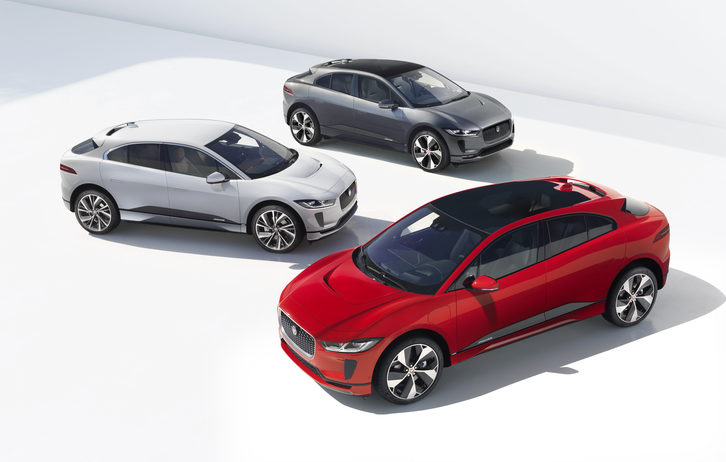
2019 Jaguar I-Pace; photo credit: Jaguar
Jaguar beat both of those brands to the market, though, introducing its I-Pace electric crossover ahead of the Geneva Auto Show, where pricing will be announced. What we do know is that it will have an estimated range of 240 miles on a charge.
A common feature of the many future EVs in the pipeline is that they will be variants on the crossover theme, offering cargo- and passenger-friendly interior packages, while often giving the option of all-wheel drive. Dedicated EV CUVs are expected from such brands as Acura, Audi, BMW, Buick, Cadillac, Ford, Genesis, Honda, Infiniti, Jaguar, Lexus, Mazda, Mercedes, Nissan, Toyota, VW and Volvo. That’s a lot of brands.
There are still many challenges to the idea of EVs going fully mainstream, and it will take serious dedication on the part of automakers, suppliers, governments, and the many companies focused on building infrastructure in order to bring it to reality. But the industry has stated its commitment, and it’s putting a ton of resources to the task, so the chances are good that an EV will be in your future. And if you do a bit of research, you may find that an electric vehicle could fit your life quite well right now.